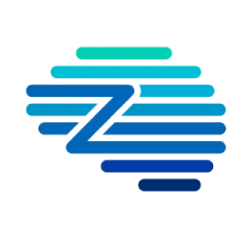What is Spend Under Management?
The amount of overall enterprise spending that is overseen by the procurement function through negotiated prices, standardized purchasing procedures, preferred suppliers, and active compliance monitoring is referred to as “spend under management.”
Increasing procurement’s sphere of direct oversight over organizational spending unlocks substantial benefits including:
- Increased conditions and prices through collective bargaining
- Compliant, guided buying results in reduced maverick expenditure and policy leakage
- Improved business unit use of procurement best practices
- Greater innovation incentives and supplier network management
- Enhanced risk reduction, compliance, and governance
Procurement, through its category expertise, rigorous buying practices, and market insights maximizes the strategic value it provides by actively managing a larger share of corporate expenditure. Let’s delve deeper into what the realm of spend under management encompasses.
Opportunity Cost of Suboptimal Spend Under Management
Here are symptoms of failure in enhancing procurement’s influence over enterprise expenditure:
- Decentralized spending control: Central procurement’s involvement is limited in many organizations as business units maintain authority over their own budgets and spending decisions. Savings opportunities are lost, and not the best suppliers are chosen.
- Limited visibility: Procurement lacks integrated visibility into supplier risks, contract coverage, organization-wide spending patterns, and savings leakage due to decentralized systems and information.
- Fragmented optimization: Instead of using procurement’s integrated picture and category management knowledge to optimize costs holistically, business units approach spending in silos.
Securing executive backing for centralized procurement supervision of expenditure, putting in place integrated systems, and promoting change management among stakeholders are all necessary to close these gaps. Maximizing procurement’s sphere of influence has substantial benefits.
The Compelling Rationale for Increasing Spend Under Management
There are strong grounds for expanding procurement’s influence over organizational expenditure:
- Leverage category expertise: Ideally, procurement should design sourcing strategies, thanks to its unique strengths of supplier management skills, market insights, and specialized category knowledge. This knowledge can be applied to use cases across the entire organization by centralizing control.
- Enable better pricing: Large negotiating leverage is obtained in supplier agreements by pooling expenditure volumes across business units under procurement supervision resulting in tangible financial benefits.
- Renegotiate improved contract terms: Growing the amount of business under preferred supplier agreements provides procurement with more negotiating leverage to renegotiate lead times, pricing, payment terms, SLAs, and other terms based on combined leverage.
- Control maverick spending: Guiding all employees to procure from centralized catalogs and contracted suppliers to minimize off-contract buying and leakage. Compliance is bolstered.
- Standardize processes: Control is enhanced by instituting effective procure-to-pay procedures, guided purchasing, approvals, and invoice validations uniformly across the organization.
Organizations profit from pricing leverage, regulated buying, preferred suppliers, and process standardization when procurement manages a larger portion of spending.
Best Practices for Maximizing Procurement’s Sphere of Influence
Organizations can methodically increase expenditures under procurement’s oversight by:
- Secure executive endorsement: Convince the C-suite of the advantages of centralized procurement governance. Engage them in the process of establishing objectives to expand the procurement function’s ambit.
- Create spend visibility: Compile and examine corporate spending information to demonstrate leakage of savings. Evaluate policy adherence and existing contract coverage.
Check out this product : Spend Analysis Software - Implement company-wide procurement policies: Establish streamlined, effective procure-to-pay procedures that business units must adhere to, including validations, approvals, and invoices.
- Enable guided buying: Allow staff to browse and choose among contractual suppliers and commodities using user-friendly self-service catalogs. Minimizes off-contract spending.
- Apply automation and AI: For contract enforcement, automate purchasing, invoicing, and payment procedures. Use AI to provide supplier and pricing recommendations, negotiations and a seamless buying experience.
Read our blog on: The Role of AI in eProcurement
- Drive change management: Through training initiatives and two-way communication, procurement could earn the business units’ trust and increase its share of the mind.
Procurement can methodically maximize its percentage of spend under management using executive mandate, process standardization, directed buying, automation, and change management.
The Impact of Maximizing Spend Under Management
When procurement manages a larger share of an organization’s spending, the benefits are multifaceted and impactful across various dimensions, including cost savings, compliance, risk management, and supplier relationships. Below are some of the key areas where organizations see improvement by expanding procurement’s control over spend:
1. Pricing Leverage and Cost Savings
By consolidating spending across different departments and business units, procurement gains negotiation leverage with suppliers. When spend is centralized, procurement can pool purchasing volumes, allowing the organization to negotiate better pricing, secure volume discounts, and access favorable contract terms. This pricing leverage reduces costs significantly across direct and indirect spend categories, resulting in improved profit margins.
Example: Organizations with centralized procurement functions often see savings of up to 10-20% on purchases, particularly when engaging in long-term contracts with high-volume suppliers.
2. Streamlined Buying Processes
Procurement’s oversight standardizes buying processes by implementing contractual catalogs, pre-negotiated agreements, and preferred supplier lists. This reduces time spent on procurement activities, eliminates maverick or off-contract purchases, and ensures adherence to organizational purchasing policies. Additionally, standardized processes help mitigate the risk of duplicate or erroneous payments and allow procurement teams to automate tasks like order approvals, invoicing, and payment processing.
Example: Automating procurement tasks through source-to-pay (S2P) systems can decrease administrative workloads by as much as 50%, freeing up resources to focus on strategic initiatives.
3. Enhanced Risk Management and Compliance
Maximizing spend under management allows procurement to enforce contractual terms, adhere to compliance requirements, and better manage supplier risks. Centralized control ensures that procurement teams can track supplier performance, compliance with regulatory requirements, and contract adherence more efficiently, reducing the likelihood of supplier-related risks, such as delivery delays, quality issues, or financial instability.
- Risk Mitigation: When procurement manages more spend, it improves supplier vetting and contract management, minimizing exposure to financial or operational risks. This is particularly important for industries with stringent regulatory demands, such as healthcare, finance, or manufacturing.
- Governance: Strong governance frameworks, enabled by procurement’s visibility into spending, help organizations avoid legal and compliance pitfalls, ensuring contracts are fully enforced, and suppliers meet environmental, social, and governance (ESG) standards.
4. Increased Transparency and Spend Visibility
One of the most significant benefits of expanding procurement’s control over spend is the increased visibility into the organization’s overall expenditure. This transparency allows procurement teams to track spending trends, analyze spending patterns, and identify opportunities for cost savings or process improvements. Procurement can easily identify areas of savings leakage and rectify instances of non-compliance, such as maverick spending or off-contract purchases.
- Data-Driven Decisions: With better spend visibility, procurement can employ data analytics to drive insights into spending behaviors, supplier performance, and contract utilization. This results in more informed decision-making and more effective strategic sourcing.
5. Improved Supplier Relationships and Innovation
When procurement is responsible for more spend, it fosters stronger relationships with key suppliers. This shift enables organizations to develop strategic partnerships with their suppliers, focusing not just on cost savings but also on innovation, collaboration, and long-term value creation. Through these partnerships, suppliers may offer early access to new technologies, exclusive deals, or co-innovation opportunities that improve both the product and service offerings.
- Example: Leading companies often develop supplier innovation programs where procurement collaborates with suppliers to co-create new products, technologies, or processes that benefit both parties, ultimately driving competitive advantages.
6. Tighter Control Over Maverick Spending
Expanding procurement’s oversight helps eliminate maverick spending, which occurs when employees make purchases outside of established procurement processes. Maverick spending not only leads to higher costs but also exposes the organization to potential contractual risks and inconsistent quality. Centralized procurement ensures that all purchases are routed through approved suppliers and adhere to pre-negotiated contract terms, minimizing off-contract spending.
- Benefit: Controlling maverick spending can reduce costs by as much as 20-30%, as employees are funneled toward more cost-effective purchasing options, aligned with organizational goals.
7. Operational Efficiency and Process Standardization
Procurement’s expanded role introduces process standardization across the organization, from supplier selection to contract management. This improves overall operational efficiency by ensuring that procurement practices are uniform, transparent, and streamlined. Automated workflows for purchase orders, invoicing, and payments further contribute to faster procurement cycles and lower operational costs.
- Process Improvement: Standardized procurement processes, enhanced with procurement automation and AI technologies, enable organizations to move away from manual, error-prone tasks to more efficient, automated workflows, saving time and reducing the cost per transaction.
Maximizing Spend Under Management with Zycus to Create Lasting Value
In summary, enhancing procurement’s sphere of influence over organizational spending through increased spend under management unlocks sizable advantages:
- Achieve lower product and service costs through aggregated negotiations.
- Minimize maverick spending and off-contract leakage.
- Enforce compliant buying by institutionalizing efficient procure-to-pay practices.
- Develop deeper strategic supplier relationships.
- Enable enterprise-wide implementation of category management excellence.
Procurement has the potential to transform from a tactical buyer into a strategic business partner by utilizing strong analytics that offers transparent visibility into expenditures and guided buying that promotes compliance purchasing.
On the other hand, success necessitates user-friendly, integrated software solutions that offer the usability and insights necessary to maximize acceptance among stakeholders.
Comprehensive source-to-pay suites with control tower analytics, real-time dashboards, catalogs that are easy to use, and embedded guided buying are all provided by Zycus. Our Merlin AI-led Source-to-pay suite gives procurement the resources they need to methodically raise spending within their zone of influence and management.
To learn more about how Zycus can optimize your spend under management, request a demo today.
FAQs
Q: What is ‘spend under management’ in procurement?
Spend under management refers to the portion of an organization’s total expenditure that is overseen by the procurement function.
Q: How can maximizing spend under management lead to cost savings?
By leveraging procurement’s expertise and strategic sourcing, organizations can negotiate better deals and achieve significant cost reductions.
Q: Why is supplier performance management important when increasing spend under management?
Effective supplier performance management ensures that quality, reliability, and compliance are maintained, leading to more efficient and cost-effective procurement processes.
Q: What role does data analytics play in managing spend under management?
Data analytics provides actionable insights for identifying opportunities to optimize spending, reduce inefficiencies, and make informed procurement decisions.
Q: How does maximizing spend under management improve overall business efficiency?
Centralizing procurement activities streamlines processes, reduces complexity, and ensures consistency across the organization, enhancing overall operational efficiency.
Related Reads:
- A Complete Guide to Vendor Management – its Benefits, Challenges, Process & Best Practices
- 7 Steps to Effective Spend Management
- How Can Procurement Spend Management Help Your Organization’s Bottom Line?
- Top 7 Spend Management Software Benefits to Revolutionize your Financial Management
- The Role of Spend Analysis Solutions in Modern Procurement
- Driving Success with Spend Management Solutions: Strategies and Best Practices
- Top 7 Spend Management Software Benefits to Revolutionize your Financial Management
- Spend Analysis: Making sense of Data
- The Evolution of Spend Analysis and the Rise of Big Data
- Transcending Spend Analysis: Supplier and Commodity information as key drivers to spend management
- Success Story – A large engineering, procurement and construction company in US partnered with Zycus for spend governance





























































